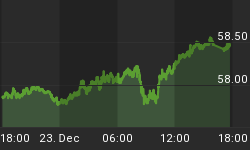Two overnight events sent the U.S. Dollar sharply higher on Monday. Firstly, the Group of Eight finance ministers hinted at an economic stimulus exit strategy and the Russians expressed confidence in the U.S. Dollar.
The Group of Eight finance ministers signaling an end to the economic stimulus plans was eventually going to happen. Signs of an economic recovery have been building for a couple of months. The ministers have not decided anything concrete at this time. This news is expected to serve as a message to others that exit strategies are being considered. They feel it is much better to announce an orderly exit rather than act haphazardly.
Russian Finance Minister Alexei Kudrin expressed confidence in the U.S. Dollar last night. This came after Russia and China had questioned the U.S. Dollar as the world's currency. These comments reassured investors that it is too early to think of the Dollar as dead.
Forex traders responded to these news events by jumping into the Dollar. This put downside pressure on all of the currencies.
The Euro turned its trend to down on a break through the last swing bottom at 1.3804. The charts are now indicating that 1.3610 to 1.3439 is the next downside target zone.
Lower commodity prices had a large effect on the Euro today. Weaker crude oil which had been bought as a hedge against inflation fell as the Dollar strengthened. Gold was also down. With the Euro, crude oil and gold all posting lower closes, traders sent a clear message that they wanted to be in the Dollar. This may be an indication that this current down move is going to be more than a short-term correction.
Although most of the weakness today in the Euro has been attributed to a stronger Dollar, some feel that the Euro can break even further if speculators stop buying it. In other words, there are rallies in the Dollar when traders increase demand for it or when traders sell the Euro against it.
The European Central Bank has not really come out and said it, but it is becoming concerned about the sharp rise in the Euro over a short-period of time. This is because one of its biggest fears is that Euros will get too expensive. This would hurt exports which is a major part of the Euro Zone economy.
There may be a retracement of today's break over the next few days, but now that the trend has turned down, traders should wait until it reaches its minimum downside objective at 1.3602 before considering the long side.
As mentioned earlier, commodity markets were hit hard on Monday as the Dollar strengthened. The Australian Dollar and New Zealand Dollar broke on the news, but the Canadian Dollar suffered the most damage.
Lower crude oil and industrials metals had the biggest effect on the USD CAD. Once these commodity markets broke, traders covered shorts and may have entered the long side when this pair crossed 1.1290. Upside momentum may stall at 1.1419, but the charts are indicating that a rally back to 1.1922 is possible.
Many traders feel the USD CAD has dropped too far, too fast. In fact the Bank of Canada expressed its concerns about an expensive Canadian Dollar last week. It feels that a further rally will snuff out the current economic recovery by squelching demand for Canadian exports.
Look for the USD CAD to rally especially if speculators begin to side with the BoC.
The strong Dollar and less demand for higher-yielding assets have put the Australian Dollar in a position to challenge the last Main Bottom at .7828. A trade through this price will turn the Main Trend to down and could encourage more selling pressure. The first down side target is .7274.
With demand for higher risk assets declining, look for the break in NZD USD to begin to accelerate to the down side. This pair has had a spectacular run on very poor fundamentals. Longs may begin to sell out and take profits as many feel that this market is way overbought.
Look for the bears to have a challenge between .6211 and .6122. The Main Trend turns down on a trade through .6151. This is the acceleration point where sell stops are likely to be hidden. Changing the trend to down will set up a further decline to the next major percentage retracement zone at .5741 to .5541.















